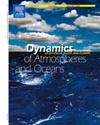萨利希海的港湾鼠海豚群
IF 1.9
4区 地球科学
Q2 GEOCHEMISTRY & GEOPHYSICS
引用次数: 0
摘要
港鼠海豚通常以1-3只的小群体出现,20只以上的群体被视为罕见事件。自20世纪90年代以来,萨利希海的港湾鼠海豚数量有了显著的恢复,近年来观察到的群体数量超过了通常的小群体数量。通过结合美国和加拿大研究机构、社区科学家、观鲸船长或博物学家的观测数据,我们证明了港口鼠海豚的聚集似乎比以前所知的更普遍,仅在2022年就记录了160个聚集。行为数据还表明,觅食行为很常见,与小团体相比,交配等社会行为在这些遭遇中更常见。在这些遭遇中,还观察到其他被认为罕见或未知的行为,包括合作觅食和船只接近。这些聚集可能是港湾海豚重要的觅食和社交聚会。这种综合了来自两个国家和多个来源的数据的整体方法提供了一个种群水平的评估,更有效地反映了该地区港鼠海豚的行为,它们不承认强加给自然界的社会政治界限。本文章由计算机程序翻译,如有差异,请以英文原文为准。
Harbor Porpoise Aggregations in the Salish Sea
Harbor porpoises are typically seen in small groups of 1–3 individuals, with aggregations of 20+ individuals treated as rare events. Since the 1990s, the harbor porpoise population in the Salish Sea has seen a significant recovery, and an increased number of observed aggregations that exceed the more usual small group sizes has been observed in recent years. By combining the observational data of United States and Canadian research organizations, community scientists, and whale watch captains or naturalists, we demonstrate that harbor porpoise aggregations appear to be more common than previously known, with 160 aggregations documented in 2022 alone. Behavioral data also indicate that foraging behaviors are common and social behaviors, like mating, are seen more often during these encounters compared to small groups. Other behaviors that are considered to be rare or unknown were also observed during these encounters, including cooperative foraging and vessel approach. These aggregations are likely important foraging and social gatherings for harbor porpoises. This holistic approach integrating data from two countries and multiple sources provides a population level assessment that more effectively reflects the behavior of harbor porpoises in this region, which do not recognize the socio-political boundaries imposed upon the natural world.
求助全文
通过发布文献求助,成功后即可免费获取论文全文。
去求助
来源期刊

Dynamics of Atmospheres and Oceans
地学-地球化学与地球物理
CiteScore
3.10
自引率
5.90%
发文量
43
审稿时长
>12 weeks
期刊介绍:
Dynamics of Atmospheres and Oceans is an international journal for research related to the dynamical and physical processes governing atmospheres, oceans and climate.
Authors are invited to submit articles, short contributions or scholarly reviews in the following areas:
•Dynamic meteorology
•Physical oceanography
•Geophysical fluid dynamics
•Climate variability and climate change
•Atmosphere-ocean-biosphere-cryosphere interactions
•Prediction and predictability
•Scale interactions
Papers of theoretical, computational, experimental and observational investigations are invited, particularly those that explore the fundamental nature - or bring together the interdisciplinary and multidisciplinary aspects - of dynamical and physical processes at all scales. Papers that explore air-sea interactions and the coupling between atmospheres, oceans, and other components of the climate system are particularly welcome.
 求助内容:
求助内容: 应助结果提醒方式:
应助结果提醒方式:


